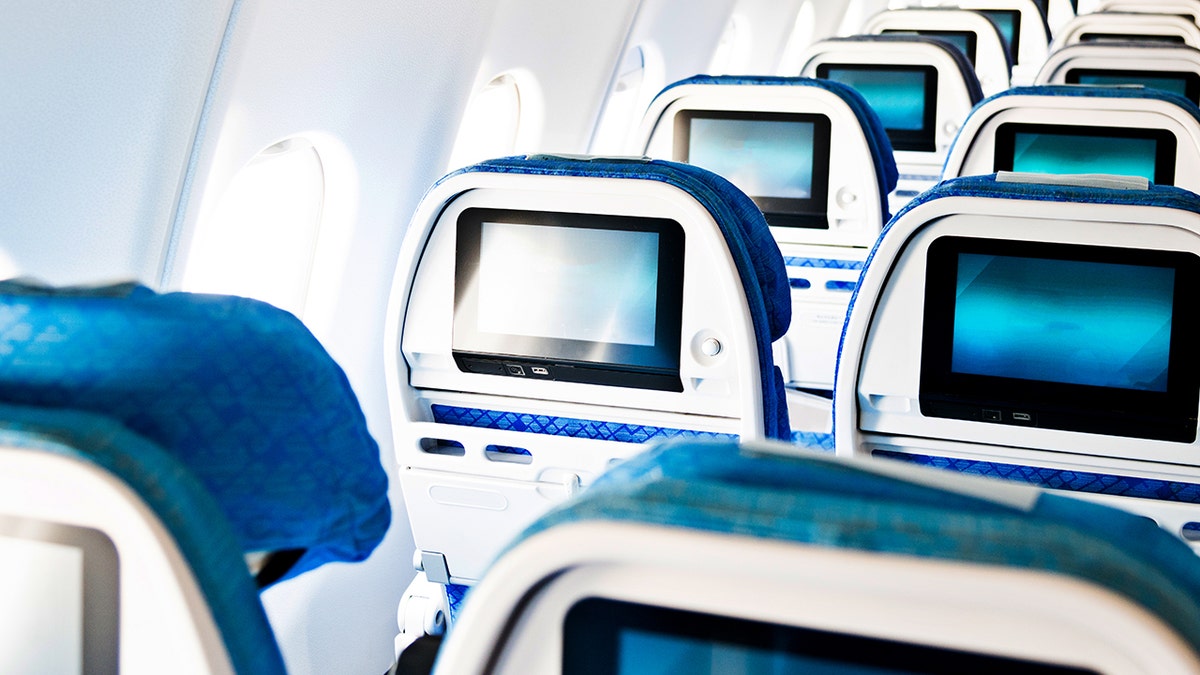
Are seat-back screens a thing of the past? Some airlines are already phasing them out. (iStock)
One of the only things to look forward to about flying is getting to binge-watch TV shows and movies. But the way we’re entertained in the air could be about to change and people aren’t happy about it.
Some airlines are reportedly ditching the seatback screens that give us our in-flight entertainment as a part of a new seat designed to save money.
According to the New York Times, seatback screens are hugely expensive to install. They can cost $10,000 per seat, estimated Dan McKone, managing director and head of the travel and transportation practice at the consulting firm L.E.K.
And for such a huge price tag, they also add bulk and weight to seats and quickly become technologically obsolete.
“Some airlines are looking at this from the standpoint of cost savings by removing the hardware,” Henry Harteveldt, travel industry analyst and co-founder of Atmosphere Research Group told The Times.
“They reduce the weight of the aircraft, and they reduce the expense associated with maintaining that equipment.”
So how are we expected to distract ourselves 35,000 feet in the air? With an in-flight entertainment app and our own mobile or tablet devices.
Australian national carrier Qantas has already ditched the seatback screen on some of their domestic aircraft in favor of the Qantas Entertainment App that passengers can stream from their personal devices.
As a part of the 2015 refurbishment of Qantas’ domestic fleet of Boeing B737-800s, some aircraft had “Q Streaming” entertainment installed to supplement the screens that fold down from the ceiling.
“This will allow customers to stream on-demand TV, movies and music direct to their own laptops, tablets or smartphones,” Qantas explains on its website.
“Pending approval from Australia’s Civil Aviation Safety Authority, customers will be able to use their portable electronic devices in flight mode throughout the entire flight.”
In the US, Delta Airlines announced it would make hundreds of movies and TV shows available to passengers on their personal devices and on aircraft with seatback screens in 2016, while American and United are already phasing out screens on new short-haul aircraft.
And while it is true that many people now do own a smartphone or tablet capable of streaming, the move by airlines to scrap their own screens is controversial.
Patrick Ligonde, a self-proclaimed “airplane nerd,” travels with his smartphone for his job in airline ground operations and spoke to the New York Times about the trend.
He said when he has to fly from his home base in Philadelphia, he does his research to make sure the seats he purchases have seatback screens.
“I try to use the seatback entertainment as much as possible,” he told the Times.
“From a passenger perspective, it makes it easier to have the monitor right there rather than having to use my own device.”
One other advantage, he said, is that he does not arrive at his destination with a dead battery.
And Ligonde’s aversion is one which is shared by many business travelers, according to Harteveldt’s research.
“Business travellers have said there’s no room to have a smartphone on their tray if they’re working on a laptop, or if they’re using a tablet or smartphone for work, it’s difficult to use that for watching entertainment. Having the separate screen is a plus for them,” he also told the New York Times.
On Twitter, the sentiment is largely the same.
But there are some passengers who agree with the airlines.
Lindsay Renfro, an associate professor at the Mayo Clinic, is one of them. She said she travels about once a month for her job and views seatback entertainment as redundant.
“There are screens everywhere else in life,” she told the Times.
“I know that when I am flying and I look around me, people are by and large using personal devices, even when a seatback screen is available to them.”
